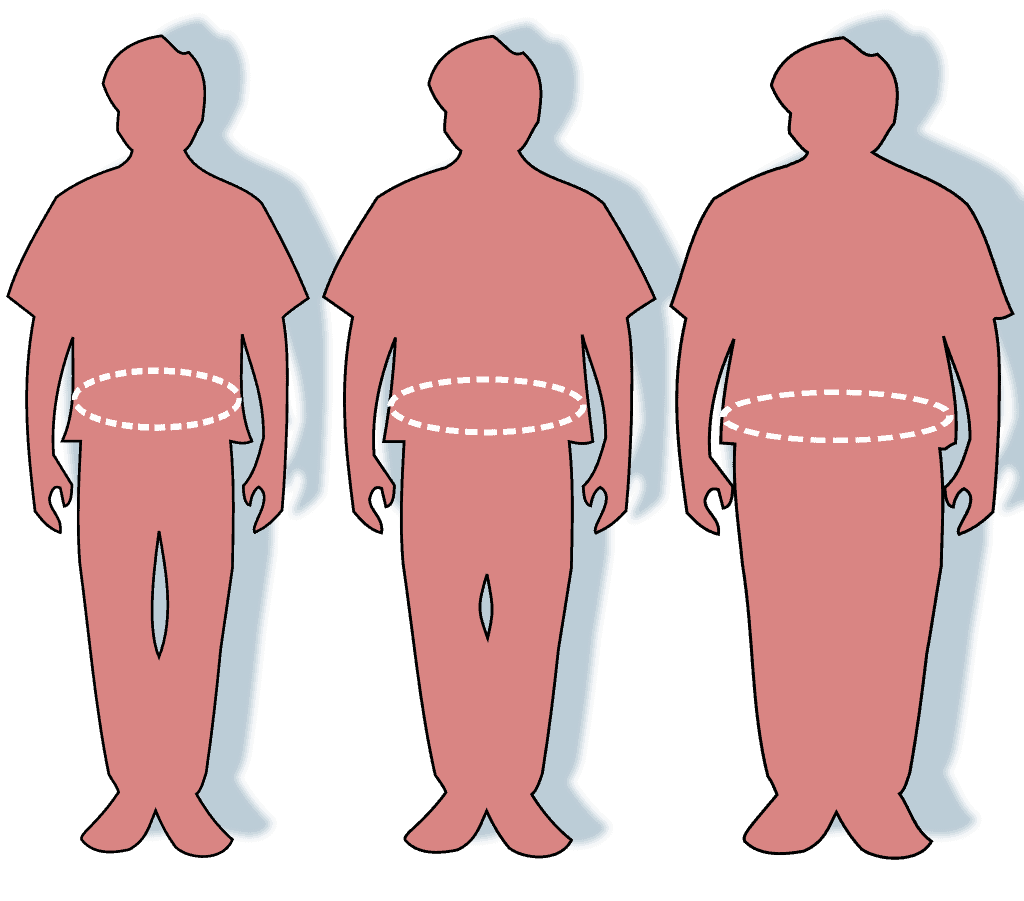
Obesity
Obesity is a medical condition in which excess body fat has accumulated to an extent that it may have a negative effect on health. People are generally considered obese when their body mass index (BMI), a measurement obtained by dividing a person’s weight by the square of the person’s height—despite known allometric inaccuracies—is over 30 kg/m2; the range 25–30 kg/m2 is defined as overweight. Some East Asian countries use lower values.Obesity is a major cause of disability and is correlated with various diseases and conditions, particularly cardiovascular diseases, type 2 diabetes, obstructive sleep apnea, certain types of cancer, and osteoarthritis. High BMI is a marker of risk for, but not a direct cause of, diseases caused by diet and physical activity. A reciprocal link has been found between obesity and depression, with obesity increasing the risk of clinical depression and also depression leading to a higher chance of developing obesity.Obesity has individual, socioeconomic, and environmental causes. Some of the known causes are diet, physical activity, automation, urbanization, genetic susceptibility, medications, mental disorders, economic policies, endocrine disorders, and exposure to endocrine-disrupting chemicals.
Epidemiologic studies of overweight and obesity in children and adults covering 195 countries have shown that the prevalence of obesity has steadily increased in most countries, doubling in 73 countries over the 25 years from 1980 to 2015. As of 2015, the United States and China had the largest numbers of obese adults, and China and India had the largest numbers of obese children. By 2018, 42% of Americans were obese.While a majority of obese individuals at any given time are attempting to lose weight and are often successful, research shows that maintaining that weight loss over the long term proves to be rare. The reasons for weight cycling are not fully understood but may include decreased energy expenditure combined with an increased biological urge to eat during and after caloric restriction. More studies are needed to determine if weight cycling and yo-yo dieting contribute to inflammation and disease risk in obese individuals.Obesity prevention requires a complex approach, including interventions at community, family, and individual levels. Changes to diet and exercising are the main treatments recommended by health professionals. Diet quality can be improved by reducing the consumption of energy-dense foods, such as those high in fat or sugars, and by increasing the intake of dietary fiber. However, large-scale analyses have found an inverse relationship between energy density and energy cost of foods in developed nations. Medications can be used, along with a suitable diet, to reduce appetite or decrease fat absorption. If diet, exercise, and medication are not effective, a gastric balloon or surgery may be performed to reduce stomach volume or length of the intestines, leading to feeling full earlier or a reduced ability to absorb nutrients from food.Obesity is a leading preventable cause of death worldwide, with increasing rates in adults and children. In 2015, 600 million adults (12%) and 100 million children were obese in 195 countries. Obesity is more common in women than in men. Authorities view it as one of the most serious public health problems of the 21st century. Obesity is stigmatized in much of the modern world (particularly in the Western world), though it was seen as a symbol of wealth and fertility at other times in history and still is in some parts of the world. In 2013, several medical societies, including the American Medical Association and the American Heart Association, classified obesity as a disease.

